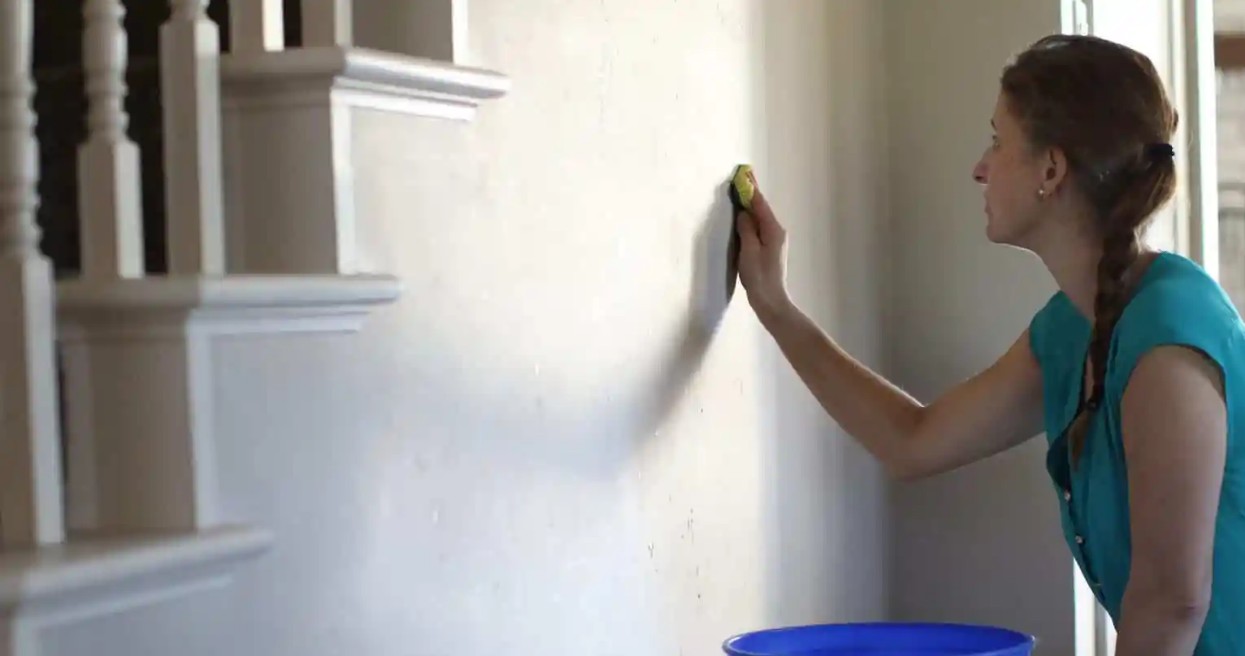Moving out can be a stressful and overwhelming experience. Between packing your belongings and coordinating with movers, it can be easy to forget about the cleaning that needs to be done before handing over the keys to your old place. One of the most important tasks when moving out is cleaning the walls. Walls can accumulate dust, dirt, and grime over time, and leaving them dirty can result in losing your security deposit. In this article, we will provide a step-by-step guide on how to clean walls when moving out.
Understanding the Type of Paint on Your Walls
Before you begin cleaning your walls, it is important to understand the type of paint on them. Different types of paint require different cleaning methods. If you are unsure about the type of paint on your walls, consult your landlord or the previous owner.
Gathering the Necessary Supplies
To clean your walls, you will need the following supplies:
- A bucket
- Warm water
- Mild dish soap
- A sponge or a soft cloth
- A clean towel
- A vacuum cleaner with a brush attachment
- A step ladder
- Protective gear such as gloves and goggles (optional)
Preparing the Room
Before you start cleaning, remove any furniture, curtains, or decorations from the walls. This will give you easy access to the walls and prevent any accidental damage. Additionally, cover the floors with a drop cloth or old towels to protect them from any water or cleaning solutions.
Vacuuming the Walls
Vacuuming the walls is an important step in cleaning them before moving out of a rental property. It helps to remove any loose dirt, dust, or cobwebs that may have accumulated on the walls over time. Here are some tips for vacuuming the walls effectively:
- Use a vacuum cleaner with a brush attachment to gently sweep the walls from top to bottom. Be careful not to press too hard, as this can damage the paint or the wall surface.
- Start in the corners of the room and work your way outward, using slow and steady strokes.
- Pay extra attention to areas around vents, light fixtures, and baseboards, as these areas tend to collect more dust and dirt.
- If you encounter any cobwebs, use the brush attachment to gently sweep them away. You may need to stand on a step stool or ladder to reach high areas.
- After vacuuming the walls, take a clean, dry cloth and wipe down any areas that still appear dirty or dusty.
Cleaning the Walls
Fill a bucket with warm water and add a small amount of mild dish soap. Dip a sponge or a soft cloth into the solution, wring it out, and start cleaning the walls. Work in small sections, starting from the top of the wall and working your way down. Use gentle, circular motions and avoid applying too much pressure. Rinse the sponge or cloth frequently and change the water if it becomes too dirty.
Removing Stubborn Stains
If there are any stubborn stains on the walls, use a cleaning solution specifically designed for that type of stain. For example, baking soda and water can be used to remove crayon marks, while vinegar and water can be used to remove grease stains. Apply the solution to a soft cloth and gently rub the stain in a circular motion. Rinse the area with warm water and dry it with a clean towel.
Drying the Walls
Once you have finished cleaning the walls, use a clean towel to dry them. Avoid leaving any moisture on the walls, as this can lead to water stains or mold growth.
Inspecting the Walls
Before moving out of a rental property, it’s important to inspect the walls for any damage or marks that could result in a deduction from your security deposit. Here are some tips for inspecting the walls thoroughly:
- Start at one corner of the room and work your way around systematically, examining each section of the wall from top to bottom.
- Look for any scratches, scuffs, or dents in the paint or the wall surface. These can be caused by furniture, decorations, or accidental bumps.
- Check for any holes or cracks in the wall that need to be patched up. These can be caused by hanging pictures, shelves, or other items on the wall.
- Use a flashlight to check for any stains or marks that may not be visible in normal lighting. These can be caused by spills or splatters, and may require extra cleaning or touch-up paint.
- If you notice any damage or marks on the walls, take note of their location and severity. This will help you later when it’s time to make repairs or negotiate with your landlord about your security deposit.
Conclusion
Cleaning walls when moving out is an important task that should not be overlooked. By following the steps outlined in this article, you can ensure that your walls are clean and in good condition, and avoid losing your security deposit. Remember to be gentle when cleaning the walls, use the appropriate cleaning solution for each type of stain, and inspect the walls for any missed spots or damage.

